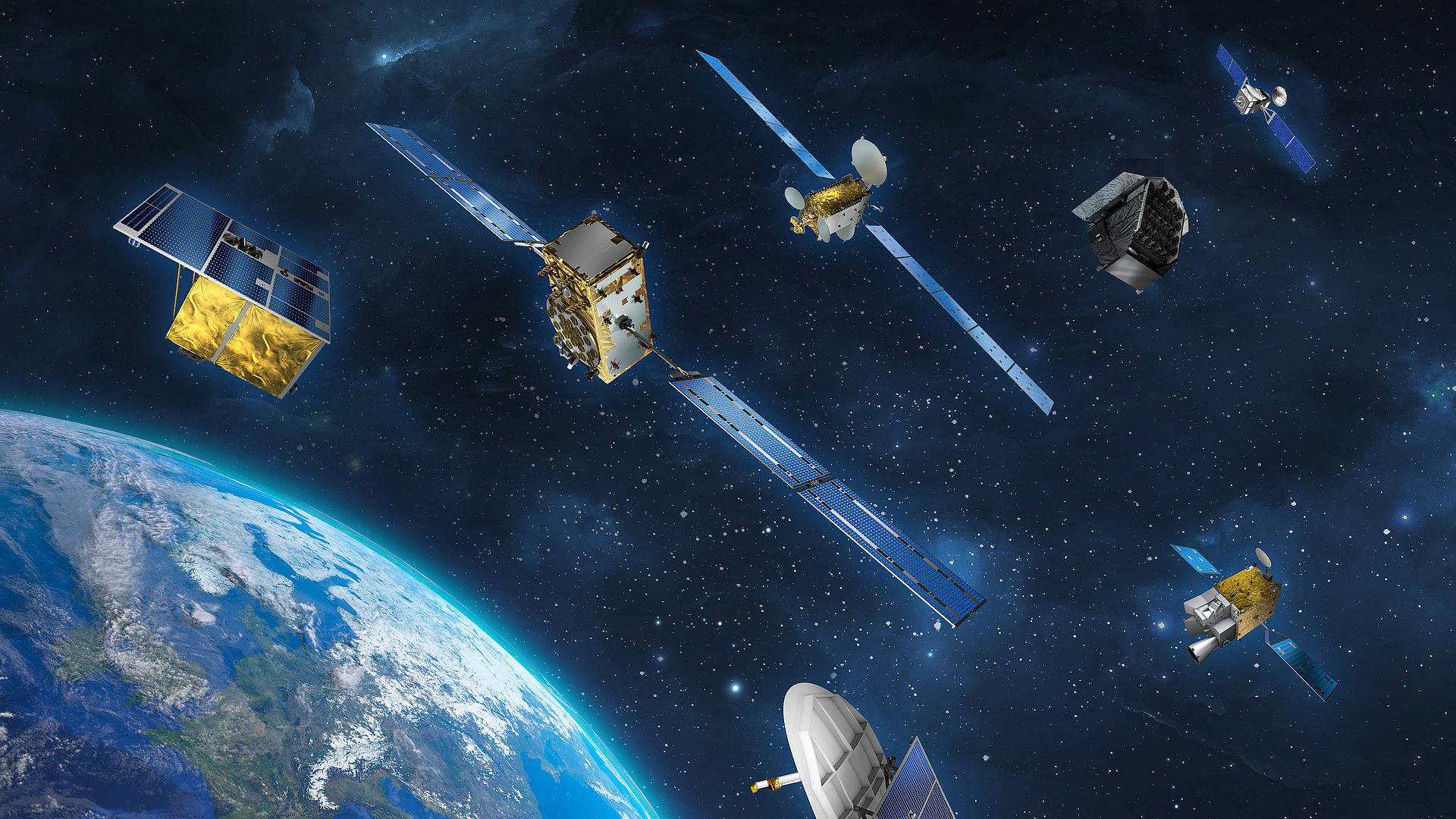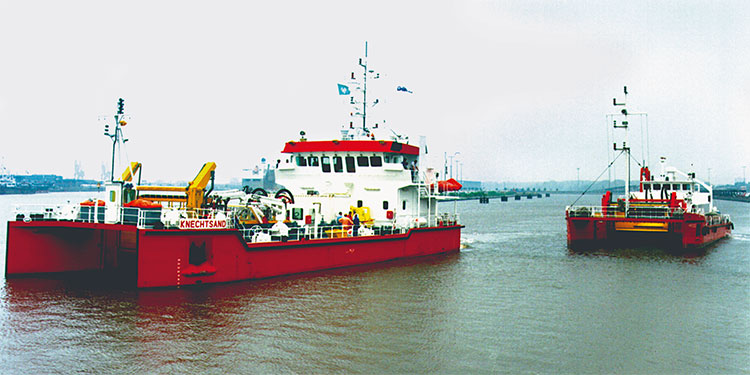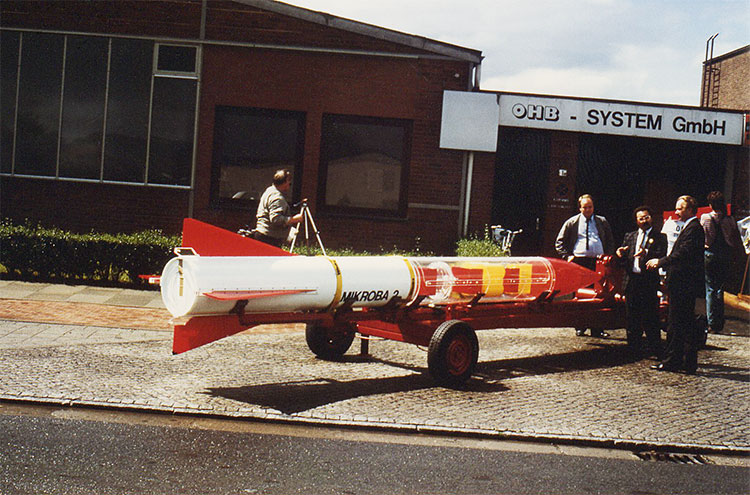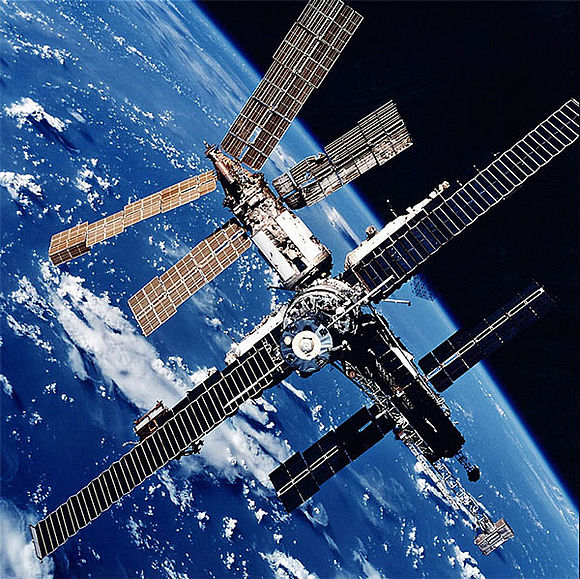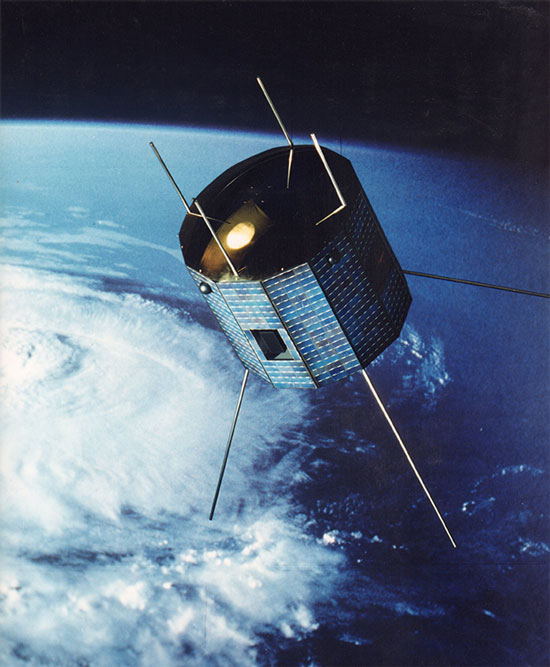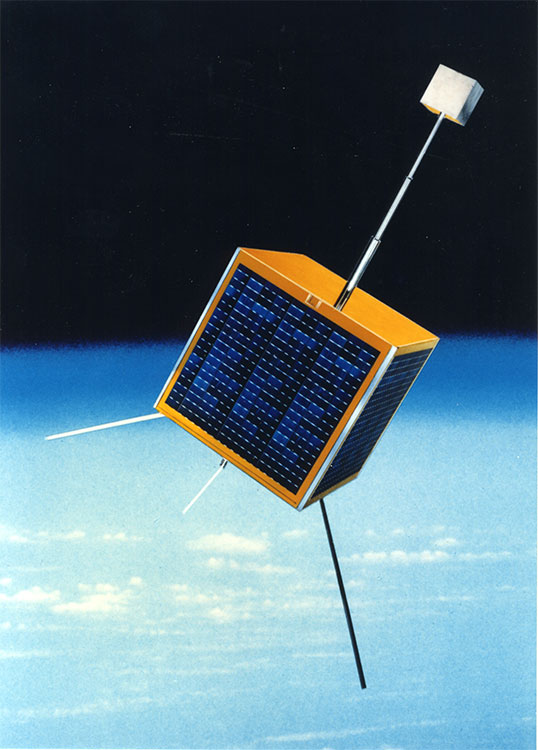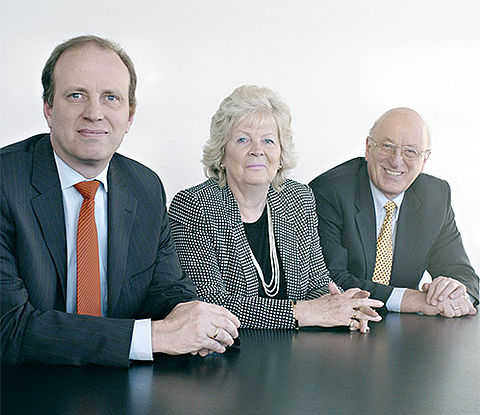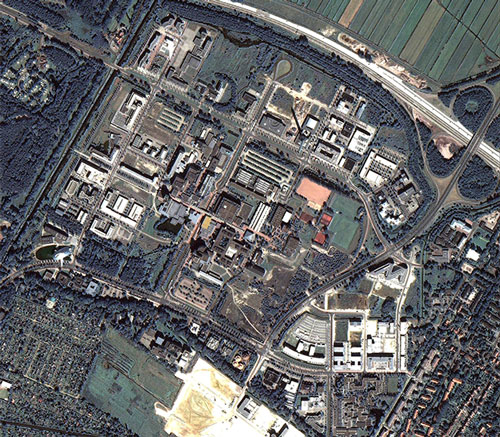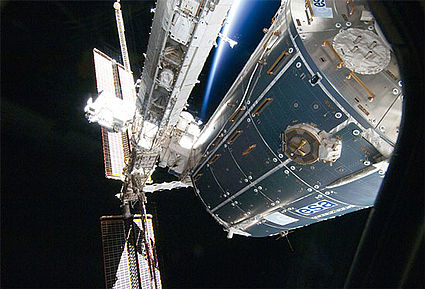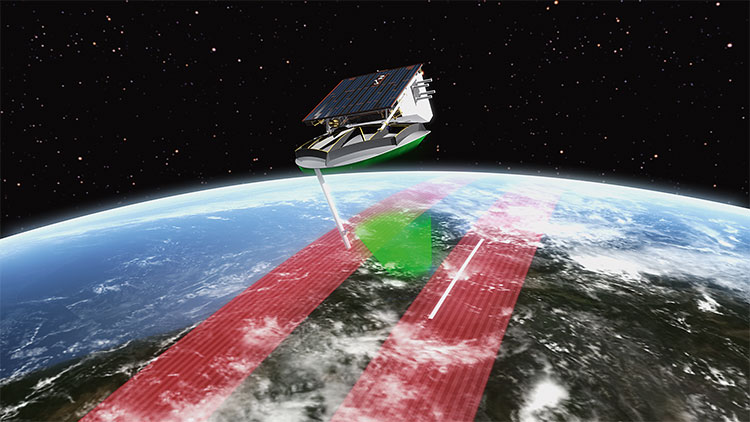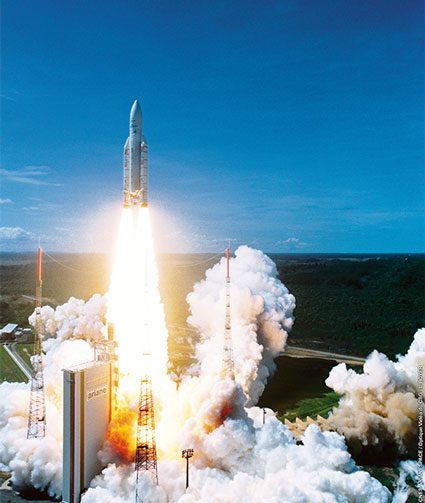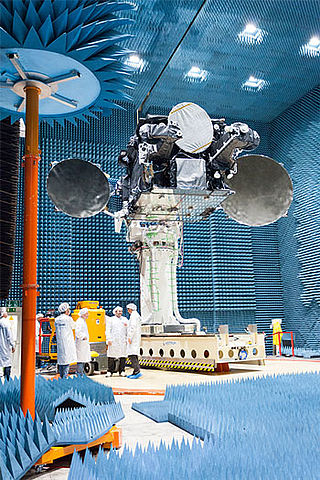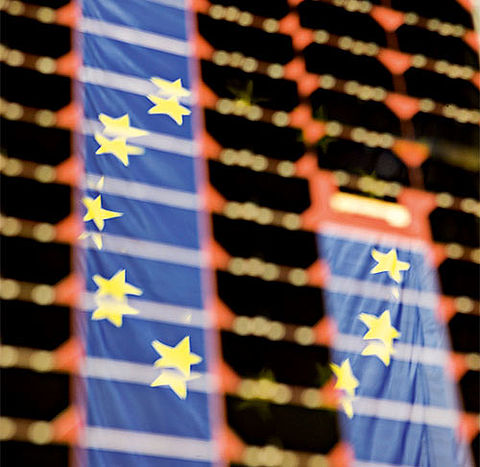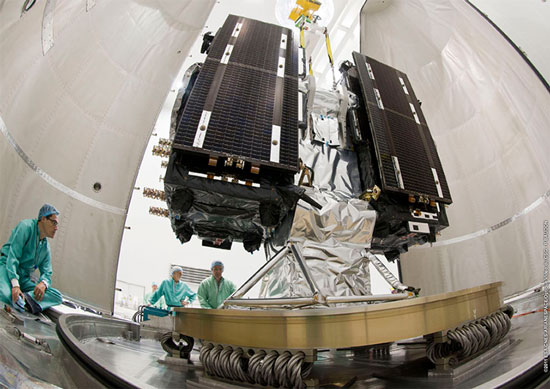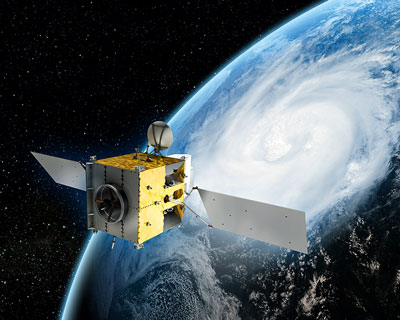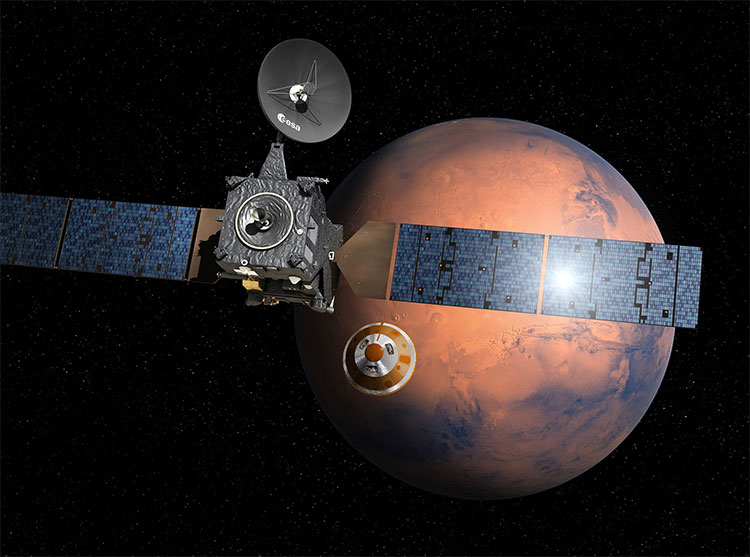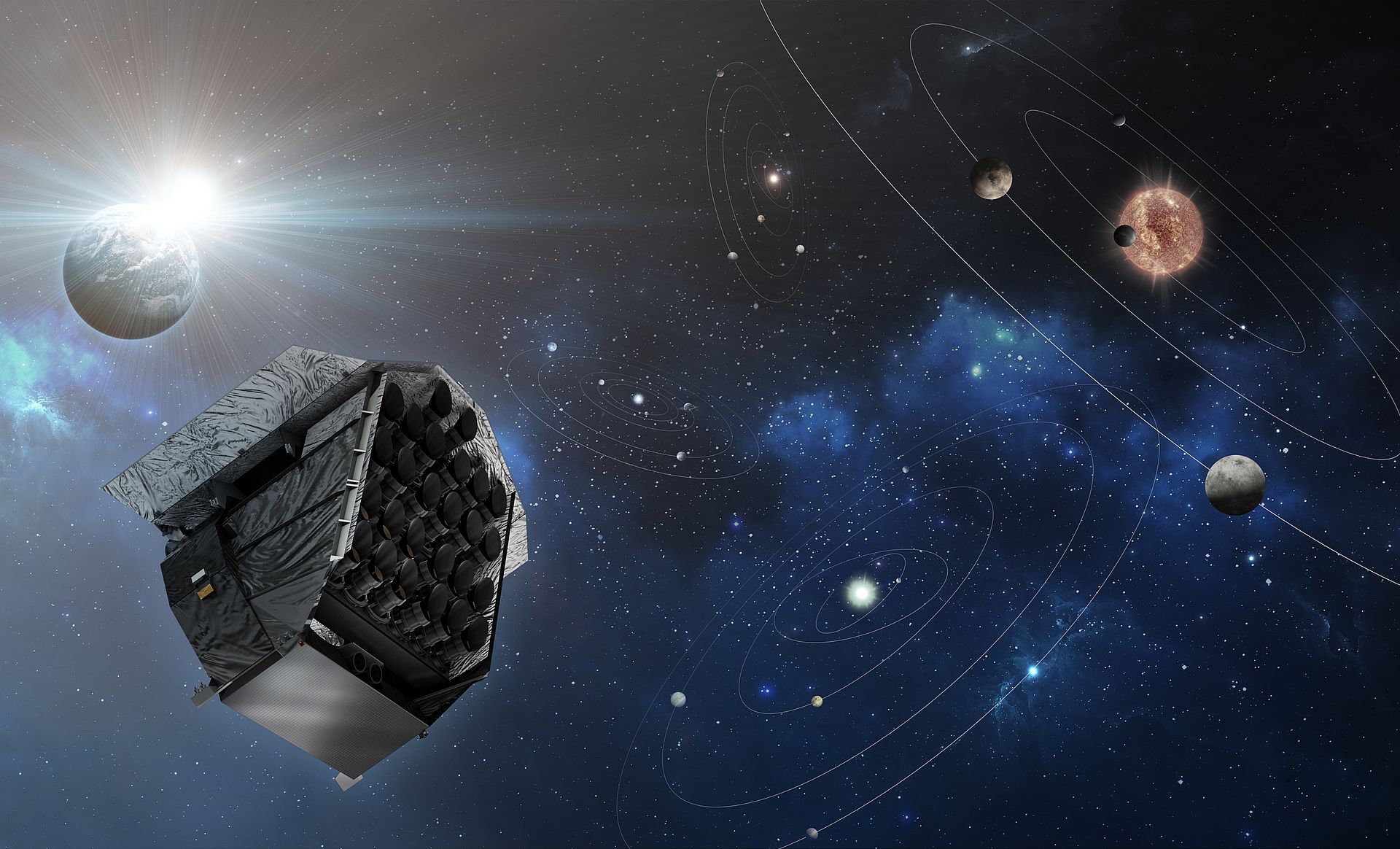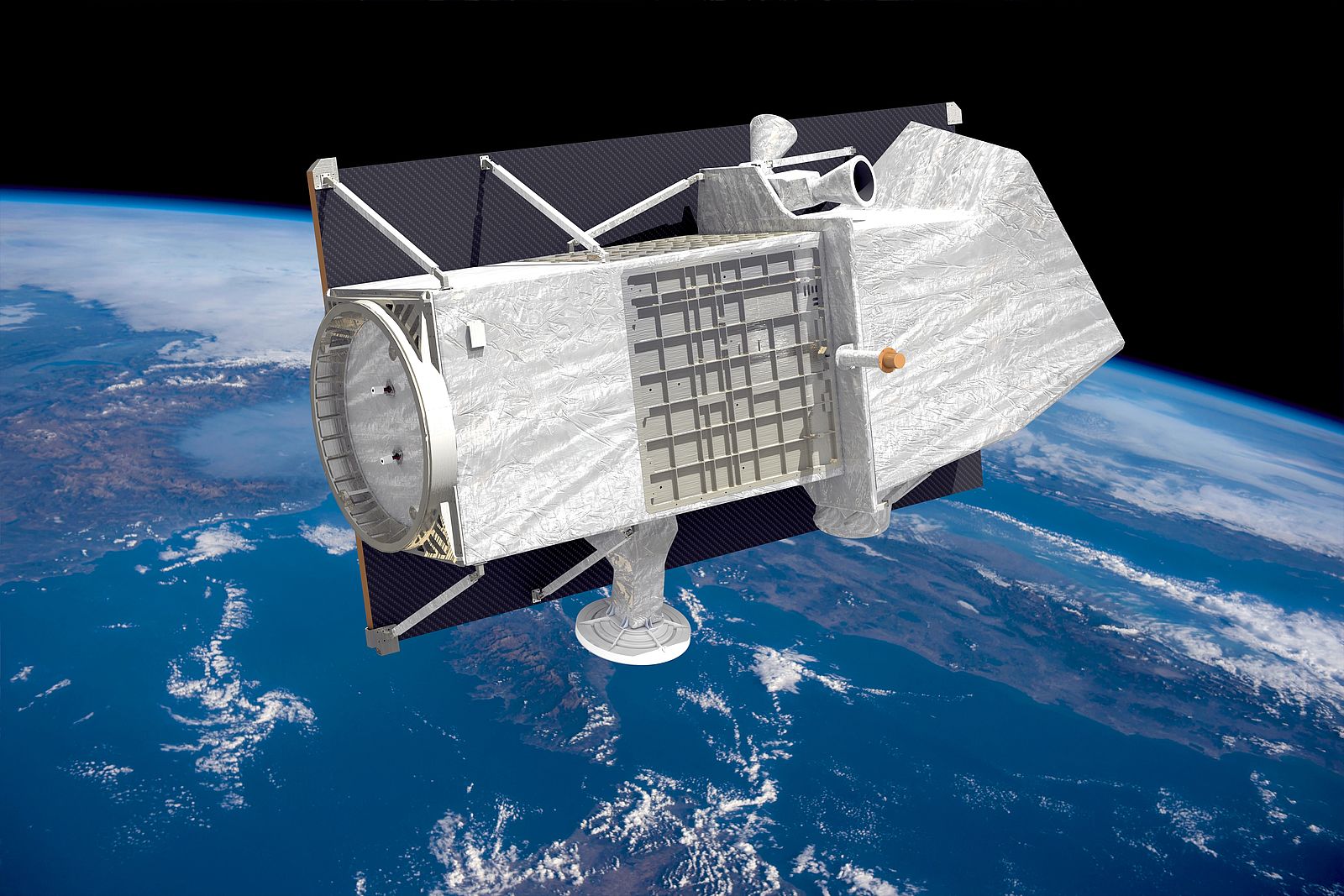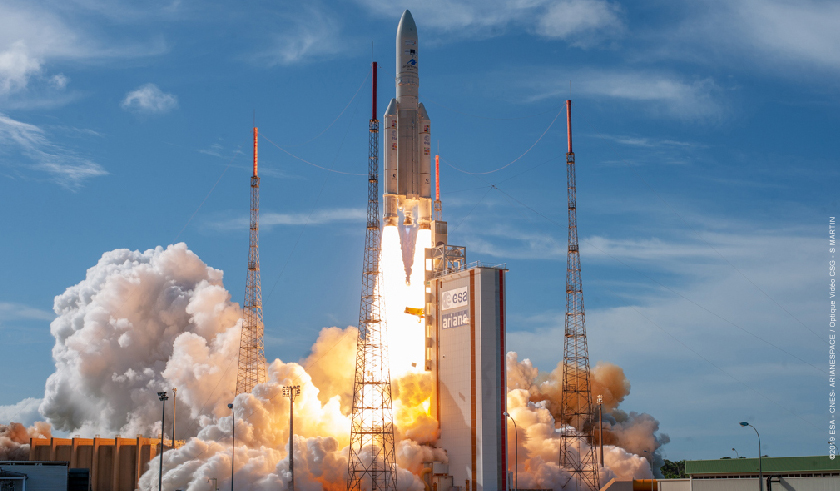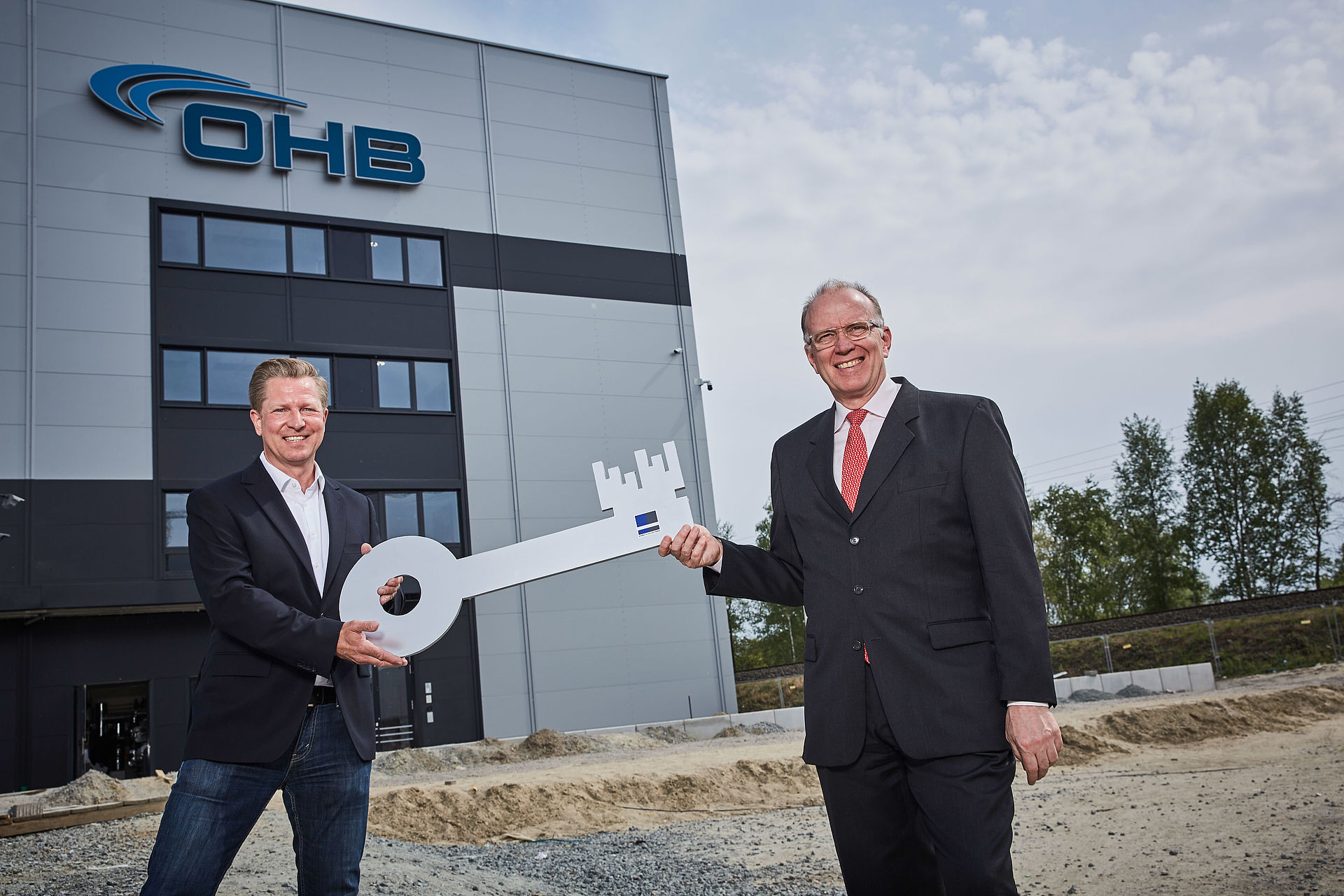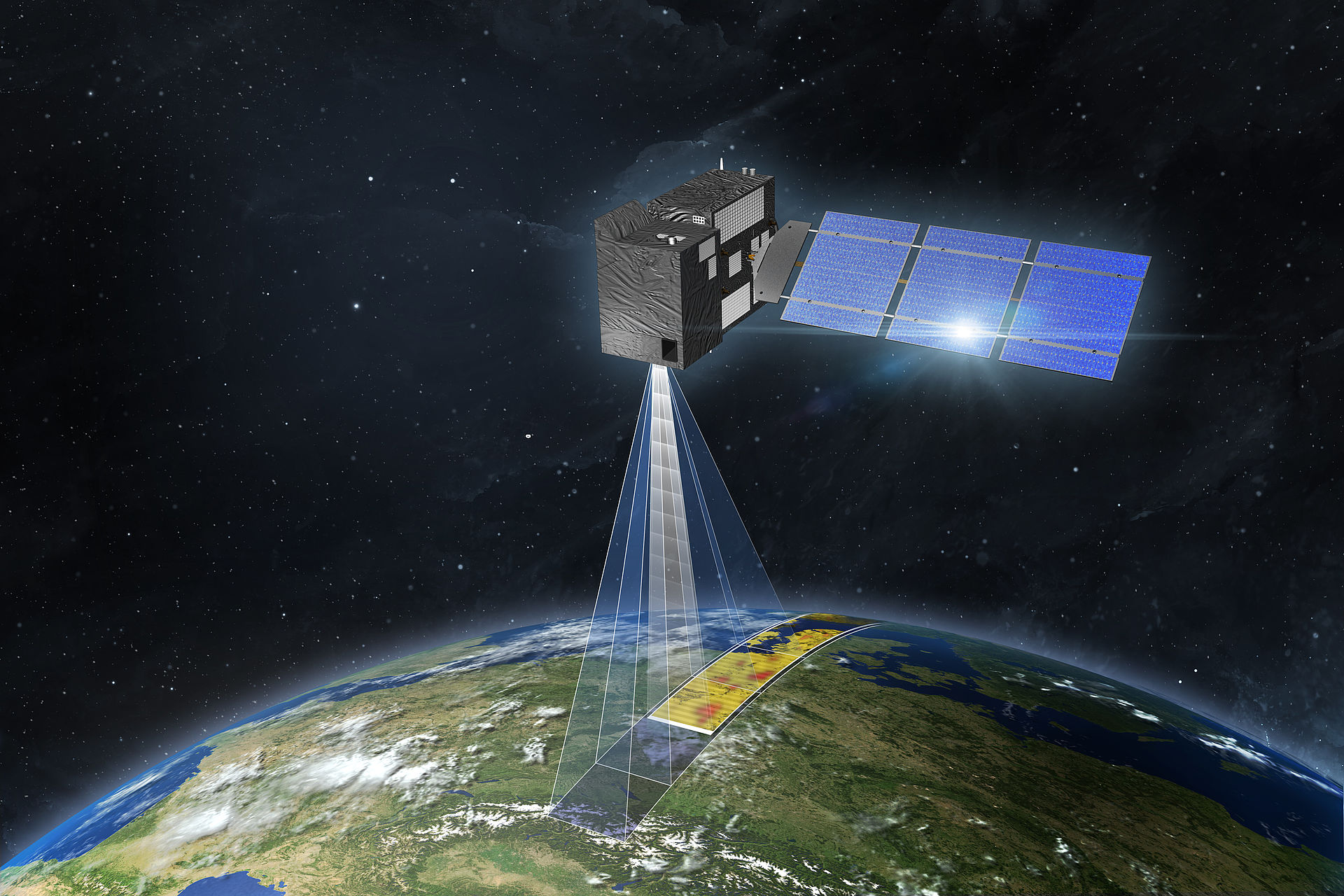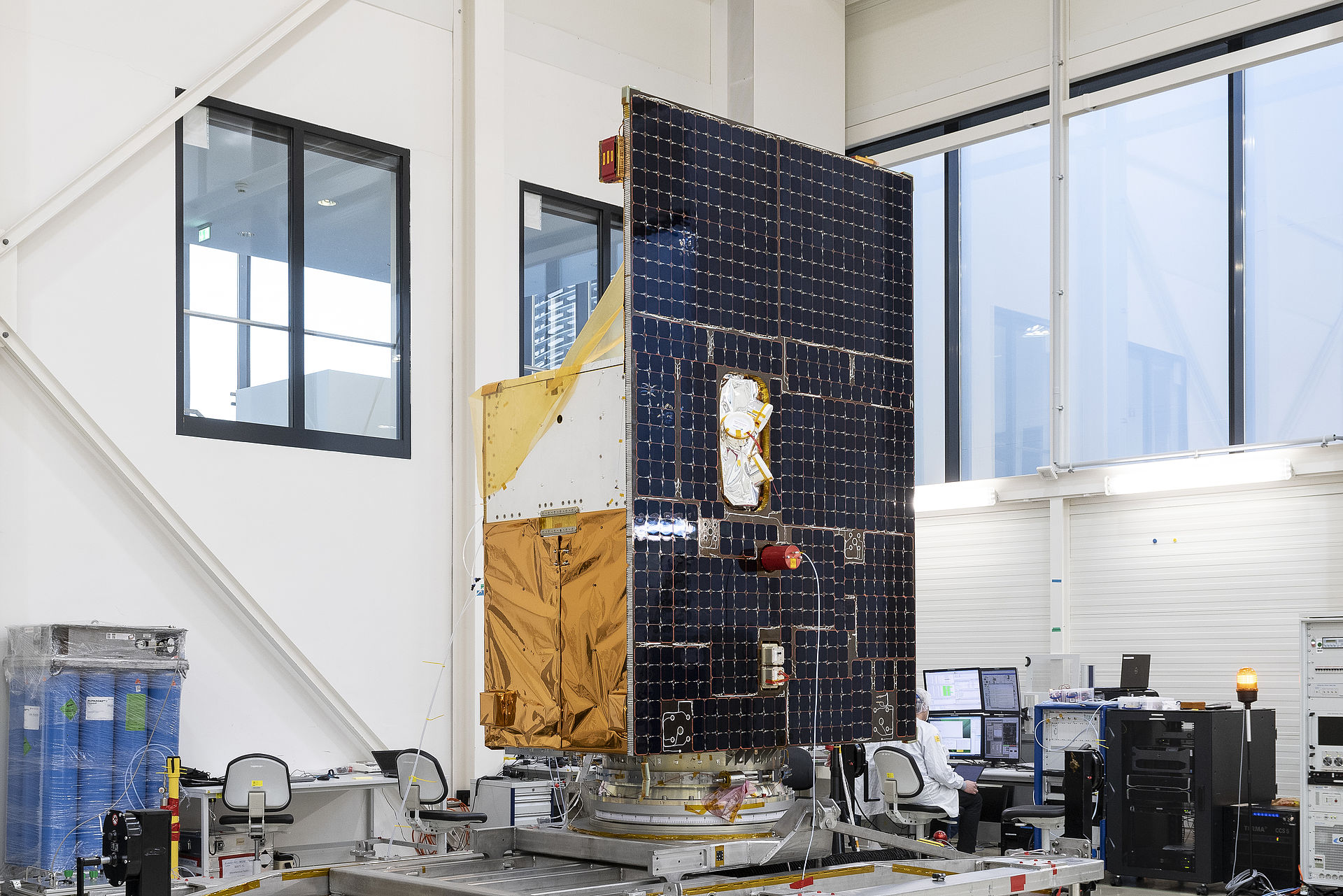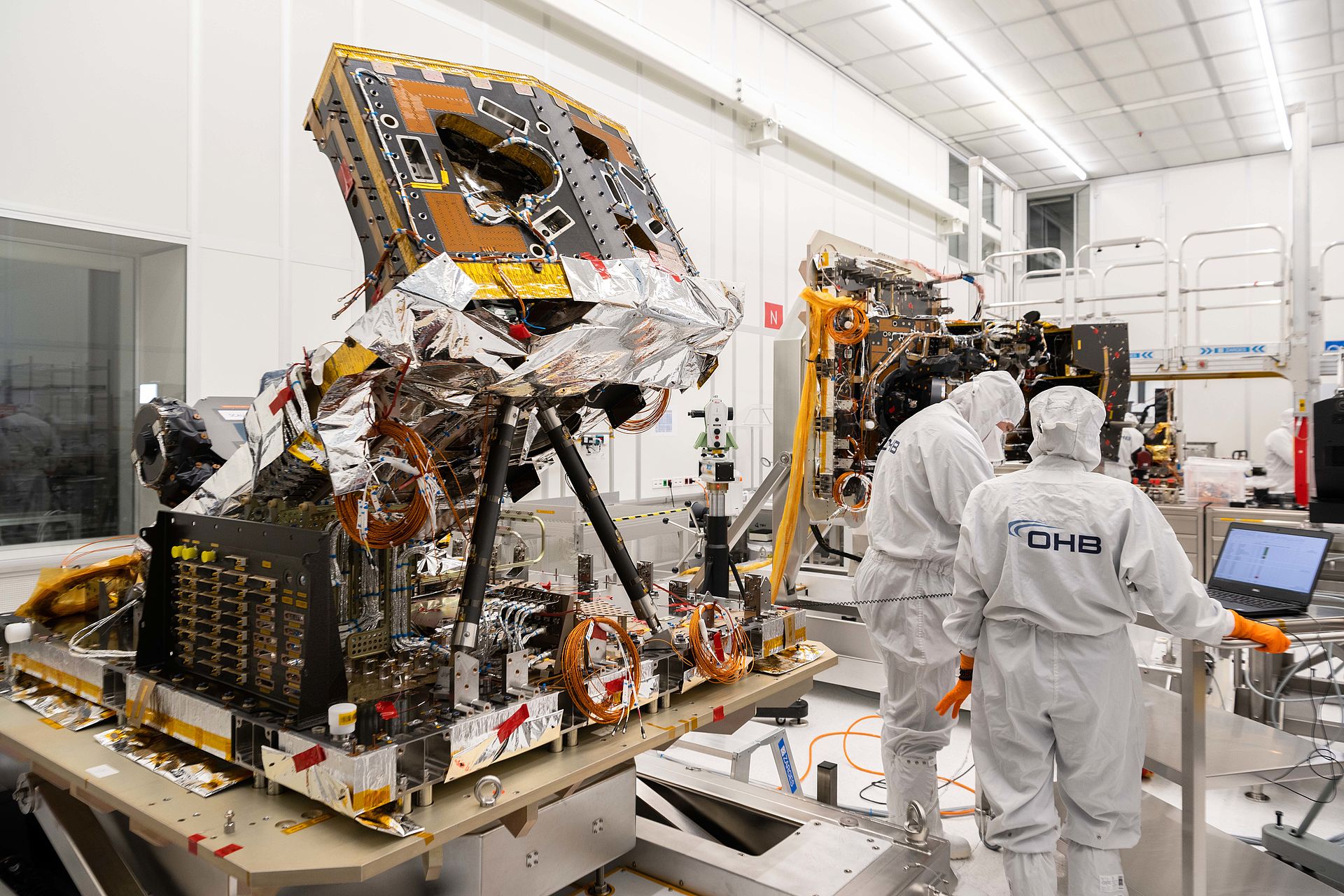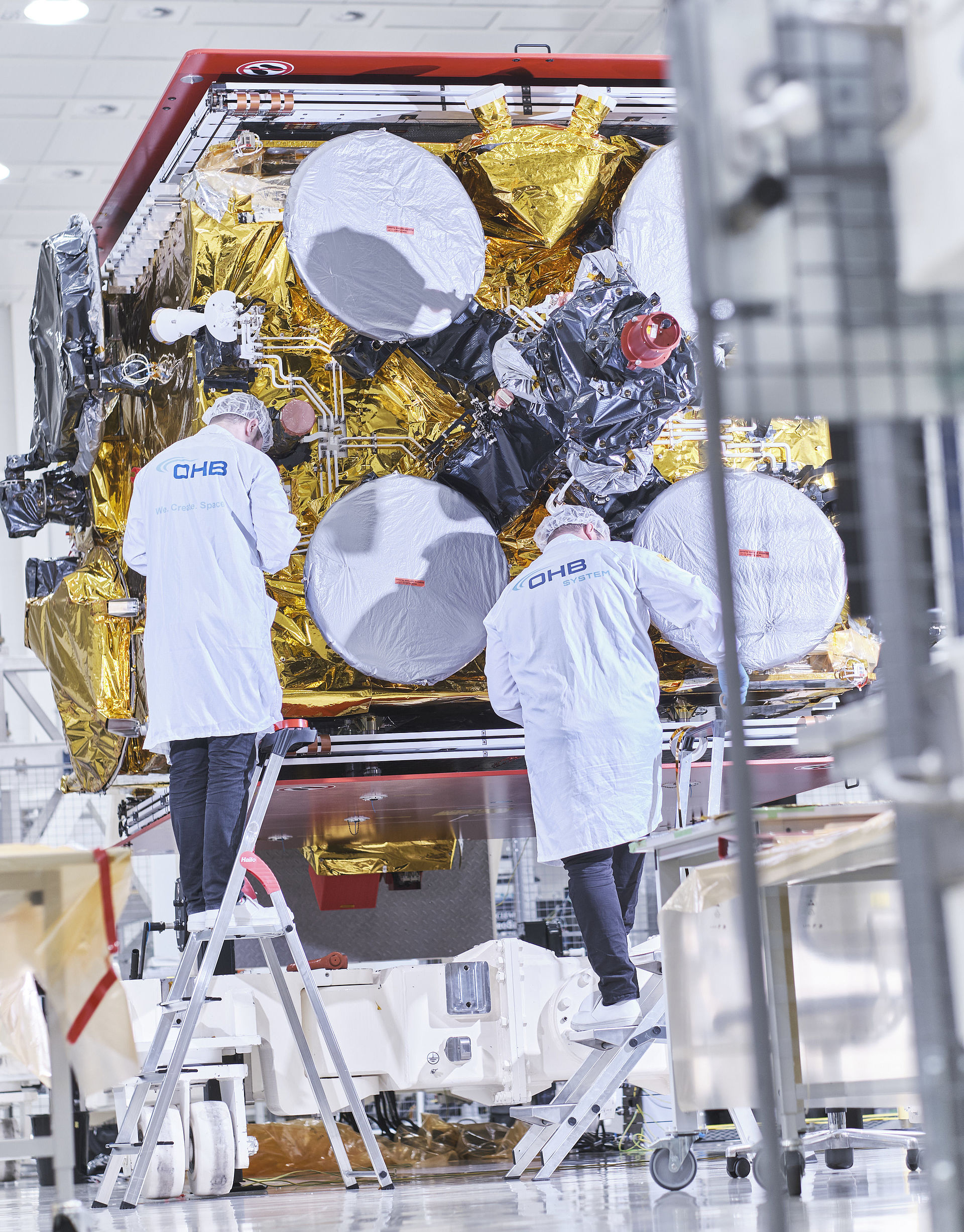1981
A small step for man
The success stories of exceptional companies frequently have their beginnings in a garage in California or a small workshop in the Bremen suburb of Hemelingen. This was the location of the small company Otto Hydraulik Bremen or “OHB” for short, when Christa Fuchs was in search of a new challenge in 1981. The children were out of the house and, as a trained business professional, she was full of energy. After initially considering the possibility of opening a wool shop, she had a fateful meeting with the Otto family, who were looking for someone to take over their small company OHB. At that time, it had five employees who repaired electrical and hydraulic marine systems for the German federal armed forces. The daughter of a businessman in the mechanical engineering industry, she courageously bought a share of the company before assuming management responsibility a year later. She employed the first engineers and experts, thus laying the foundations for growth. This marked the beginnings of what has since become one of the leading European space companies, OHB SE.
1985
Headed for space with unconventional ideas
Manfred Fuchs had been an extremely successful manager at MBB ERNO (now Airbus) when he entered his wife’s company in the mid 1980s. He was more familiar with space business than just about anyone else, having played a key role in establishing it in northern Germany. The space pioneer took the courageous step of going into business on his own because, aside from other reasons, he saw niches which he was able to address more effectively with a smaller and nimbler company. Whereas many experts believed that only large and expensive satellites and space systems were viable, he was convinced of precisely the opposite. His ideas and vision was based on the following reasoning: if it was possible to make components and technologies increasingly more compact and efficient, why should it not also be possible to offer satellites which are more efficient but also substantially smaller and less expensive?
Creative approaches along the lines of “New Space” and COTS
In working on their projects, he and his team did not shy away from taking unconventional approaches and – wherever possible – using commercial off-the-shelf (COTS) components which they modified to make them suitable for use in space. Applying creative approaches along the lines of “New Space”, OHB as a young aspiring start-up swam successfully against the tide. In the ensuing years, the space expertise was systematically expanded with experiments in microgravitation research, encompassing the MIKROBA drop capsule, parabolic flights and contributions to the major space missions of the time Spacelab, D2 and MIR 92.
1994
Satellites and forays into telecommunications
The first satellite made by OHB was launched as early as in 1994. Brem-Sat was a small scientific and technical multi-talent, allowing the company to demonstrate impressively that “small is beautiful”. At the same time, the two in-house SAFIR satellites, with which OHB entered the telecommunications market, were developed. OHB harnessed the potential offered by the growing telematics market with the global positioning of vehicles, goods, ships and even wild animals and the transmission of status reports by satellite. The Fuchs family were quick to sense the potential offered by the direct benefits of space flight, establishing OHB Teledata in 1993, buying into US satellite operator ORBCOMM and developing their own microsatellite series RUBIN.
1995
Growth and a successor
In the mid-1990s, telematics and the expansion of space technology lured Marco Fuchs, a practicing attorney at the time in New York and Frankfurt, to his parents’ small high-tech company. Now the technical visionary Manfred Fuchs and the financial expert Christa Fuchs had by their side a strategist, who was also the natural successor and a guarantee of continued growth.
Bremen technology estate the perfect home
By this time, the Company had already outgrown the small workshop in Bremen-Hemelingen. True to the motto “smaller, cheaper and better”, OHB grew, moving into its own company buildings at the Bremen technology estate close to the university in 1988. With its proximity to centers of learning, research and development, institutions and the Bremen drop tower, this was the ideal environment for the aspiring space company OHB.
Renowned partner for space technology
OHB had long since become a respected partner in the space industry, working on projects such as the Envisat environmental satellite, the Abrixas X-ray detector and the MITA research satellite. In addition, payloads and hardware for the MIR 97 mission, the ATV space transporter and the European COLUMBUS module of the International Space Station ISS, in which Manfred Fuchs played an instrumental role, were developed and assembled at the OHB integration halls and clean rooms.
Inexpensive launchers for small satellites
From the outset, the steadily growing company was also guided by its motto “small and inexpensive” when it came to launching satellites into space and was one of the first western space companies to forge partnerships with Russian launch vehicle suppliers. This was a reliable and economical alternative for placing its satellites in orbit. With the establishment of “COSMOS International Satellitenstart”, OHB entered a further successful field of business and was now able to market its satellite systems complete with launch services.
2001
The major breakthrough: stock market flotation and SAR-Lupe
By the time the Company was successfully floated on the stock market in 2001, Manfred Fuchs and his team were already working on a project which would lead to a major breakthrough before the end of that year. Over a period of twenty years, OHB had grown steadily but moderately, establishing itself as a small supplier of components for the space industry. But now management and employees took the big step forward to become a systems provider for satellites. The Company entered a bid for the SAR-Lupe reconnaissance system, a decision which pitted it against the seemingly invincible competition. The customer, the German federal armed forces, was convinced by the overall plan comprising five small satellites, launch services and the ground station. OHB was awarded the contract for the project worth around EUR 320 million.
Headed for new dimensions
The Company was now embarking on a program worth ten times its annual revenues at the time. For the first time, the development work tied up as many as 75 employees for the entire duration of the project, equivalent to the Company’s entire staff on the day on which the request for bids is announced. During this period, OHB once again demonstrated its flexibility, establishing new organizational structures within a short space of time to facilitate the development of the system, coordination with the partner companies and regular consultations with the customer. By the time the first satellite was successfully launched in 2006, OHB had already changed radically. Once a wellspring of ideas, it had become a systems supplier; once smiled down upon, it had become a competitor to be reckoned with. And this was merely the beginning of a journey into further dimensions.
2005
Growth driven by acquisitions and startups
When a period of consolidation arose in Germany as a result of flat space budgets, prompting many technology companies to hive off their space activities, the Fuchs family remained convinced of the prospects for the space industry. Together with Hans Steininger from Apollo Capital Partners, they bought MAN Neue Technologie, first placing it on a solid basis under the name MT Aerospace (Augsburg) and MT Mechatronics (Mainz) and then nudging it onto a growth trajectory. This step also marked OHB’s entry into launcher and telescope business, giving it a 10-percent share in the work on the European Ariane 5 program. The number of people employed by the OHB Group rose more than three-fold to over 800.
The step towards Europe and a geostationary orbit
When Luxembourg joined ESA in the same year even though the country did not have any space industry to speak of, OHB jumped on the bandwagon by establishing a wholly owned subsidiary known as LuxSpace. In this way, it gained access to contracts via the Luxembourg ESA budget and was also able to implement the SmallGEO small geostationary satellite platform developed by OHB System within the ARTES 11 program. As the home to satellite operator SES Astra, Luxembourg had a keen interest in this platform.
In 2007, Munich-based Kayser-Threde (now OHB System in Oberpfaffenhofen) was searching for a new shareholder, which it duly found in OHB. With the 100% acquisition of this company, OHB not only gained just on 250 experienced and highly motivated engineers with outstanding expertise in space payloads but also managed to bring aboard a direct competitor.
2009
European expansion
The fact that OHB’s extension and growth strategy extended beyond Germany was already reflected in the establishment of Luxspace. The development of the Group’s European footprint gained further momentum in 2009, when Milan-based company Carlo Gavazzi Space (now OHB Italia) was integrated in the OHB Group. A specialist in mini and microsatellite systems, this company had been privately owned by the Fuchs family since 1995. Following the integration of this company within the Group, OHB gained a major foothold in the Italian space industry, Europe’s third largest market.
With the award of a contract for the H36W1 telecommunications satellites by Spanish company Hispasat, OHB built the first geostationary satellite on the basis of its SmallGEO platform.
2010
European Number 3
This was followed by further important strategic additions across Europe: Thus, in 2010, OHB acquired the Belgian subsidiary of Thales Alenia Space in Antwerp, renaming it Antwerp Space. In 2011, the Swedish Space Corporation (SSC) carved out its space systems division, selling the portfolio and the small team of 40 specialists to OHB, which placed them in a new company known as OHB Sweden. By this time, the OHB Group had already built up a strong presence across Europe; however, its importance had increased enormously thanks to other business successes.
Satellites for the European navigation system Galileo
At the project level, OHB also continued to grow and expand, taking a major step forward. This time, it was the first part of a series of satellites for a future European navigation system known as Galileo. Once again, hardly any sector observer thought that OHB was seriously in the running for a project of this scale. Yet, the seemingly impossible actually happened: OHB was awarded the contract for the first full tranche of 14 satellites worth EUR 566 million. In the course of the following seven years, a further 20 satellites were ordered one after the other, bringing to 34 the total number of satellites supplied by OHB for the Galileo European navigation system.
And now for the weather: the third-generation Meteosat satellites (MTG)
Once a small workshop, OHB was now listed by ESA as the third supplier of integrated space systems, thus offering a strong alternative to the duopoly comprising Astrium and Thales Alenia Space. Yet, competition does not rule out partnerships and nowhere is this truer than in space. Together with Thales Alenia Space, OHB System achieved the next sensation at the end of 2010 when their consortium prevailed in the bidding process for the next-generation European weather satellites, Meteosat Third Generation (MTG). The OHB Group now held roughly EUR 750 million of this contract.
As in 2001, when it took a leap forward to become a principal contractor, the OHB Group was now on the verge of evolving into a European aviation and space group thanks to its courage, initiative, fantastic political support and corporate vision.
2013
SAR-Lupe gives way to SARah: A glance through the clouds
The SAR-Lupe reconnaissance system is working very successfully. However, as space systems inherently have a limited life span, it is necessary to plan their replacement in good time. For this reason, the German federal armed forces awarded a contract for the follow-up SARah system in 2013. This time, OHB’s plan involving three radar satellites and two ground stations found favor.
SmallGEO also gained momentum in the same year. Under the Electra name, OHB developed a fully electric satellite platform for geostationary orbits to reduce satellite mass and launch costs.
2017
SmallGEO: Successful in a geostationary orbit
The H36W1 telecommunications satellite was placed in its target orbit at an altitude of 36,000 kilometers at the beginning of the year, operating perfectly. The successful launch of the first satellite from the SmallGEO range marked a further milestone in OHB’s history as it meant that OHB was now also active in geostationary satellites and, hence, the commercial telecommunications market.
Two more satellites - EDRS-C and Electra - were already close to completion. Mid-year, OHB was awarded a contract worth EUR 310.5 million for the national Heinrich Hertz satellite mission, which was also based on SmallGEO.
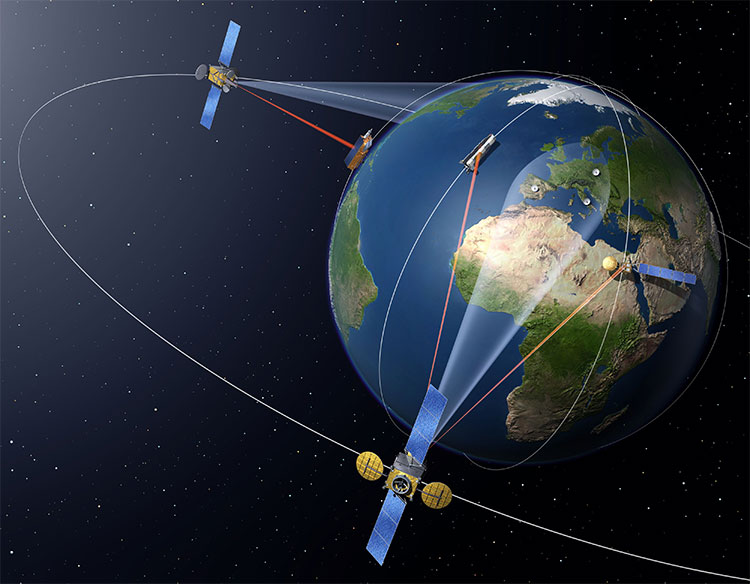
„We have shown in the competition for major projects such as ExoMars, EnMap, Galileo, MTG, SARah, Solar Orbiter and our own SmallGEO series that in spite of our strong growth we have retained a high degree of flexibility and our unconventional and innovative approaches. It is now up to us to maintain and expand this strong position.“
Further satellites for the Galileo Program
In June 2017, OHB System AG was awarded a contract worth EUR 324 million to produce an additional eight satellites for the Galileo navigation program. In October the European Commission ordered a further four satellites from OHB System AG. This will increase the number of Galileo satellites supplied by OHB to a total of 34.
Anniversary for SAR-Lupe and kick-off for a further reconnaissance project
SAR-Lupe radar reconnaissance system in operation for 10 years
In the summer of 2017, OHB celebrated the tenth anniversary of the product that initiated the breakthrough as a leading German systems specialist. Back in 2007, OHB supplied the German federal armed forces with their first own satellite-based reconnaissance system, which has been operating reliably around the clock ever since. SAR-Lupe allows the German federal government to respond quickly and independently in crisis situations and makes a constructive contribution to ensuring full readiness of the armed forces.
Contract for electro-optical reconnaissance system signed
A few months later OHB's CEO Marco Fuchs signed a contract for the implementation of a global electro-optical satellite system for reconnaissance worth EUR 400 million.
2018
Space exploration
Is there a second Earth?
After two studies on the PLATO science mission (Planetary Transits and Oscillations of Stars) had already been conducted under the OHB umbrella in previous years, negotiations concerning the concrete implementation of the project begun in spring 2018. Even at this early stage, OHB already emerged as a preferred candidate for the development and production of the PLATO satellite. The satellite is an observatory for use in space that allows the tracking and exploration of exoplanets. The conclusion of negotiations and the signing of the contract between ESA and OHB followed in autumn 2018 at the IAC (International Astronautical Congress) in Bremen. The contract is worth around EUR 297 million and will be implemented under the leadership of OHB together with Thales Alenia Space (France and UK) and RUAG Space Switzerland.
Focus Earth
Participation in Copernicus program
Since June 2018, OHB has been involved in five studies on the so-called "Sentinel Expansion", the expansion of ESA's Copernicus Earth observation mission. Copernicus is the European Commission's second major space program alongside Galileo. The aim of the program is to gain a better understanding of Earth’s climate system. The total contract value of the studies amounts to EUR 17 million.
OHB as prime contractor for HERA study
In August 2018, OHB was selected as prime contractor for an ESA study on the HERA asteroid mission. The HERA mission is the European contribution to a planetary defense mission to be conducted in cooperation with NASA. NASA contributes the DART satellite, which is intended to hit the smaller body of the twin asteroid system Didymos and thus deflect its orbit. The main objective of the HERA mission is to study the consequences of the collision and the resulting impact crater. As part of the study awarded to OHB, a detailed mission definition will be developed for this scenario. The contract has a volume of EUR 4.5 million and expands the OHB Group's current activities in the area of Space Safety.
2019
Billion-euro corporation and successful satellite launches
Economic milestone reached
A significant economic milestone was announced at the annual press conference in March 2019: In fiscal 2018, the OHB Group's total revenues came to EUR 1 billion for the first time.
Hyperspectral satellite PRISMA sucessfully launched
PRISMA, the first hyperspectral satellite manufactured by OHB, was successfully launched in March 2019. The satellite was built for the Italian space agency ASI (Agenzia Spaziale Italiana) at OHB Italia. The high-resolution data which can be collected by its instruments are to be primarily used for monitoring and forecasting climate change.
OHB’s second SmallGEO satellite in orbit
In August 2019, all available thumbs were crossed once gain as EDRS-C, OHB's second SmallGEO satellite, took off from the European launch site in Kourou. The 3.2-ton communications satellite is the second node in the European Data Relay System (EDRS), which is designed to enable continuous data transmission between satellites, unmanned aircraft and ground stations. The system allows full-time communication with satellites in low Earth orbit, which are only in the field of vision of ground stations for short periods of time and thus cannot reach their full potential, especially in situations of crisis.
A satellite mission to protect our Earth
Green light for Hera at ESA Ministerial Council Conference
At the ESA Ministerial Council Conference in November 2019, the Hera asteroid defence mission was given a much larger budget than previously expected. This means that EUR 170 million are available for the first phase of the mission. This is a major success for OHB as the main contractor.
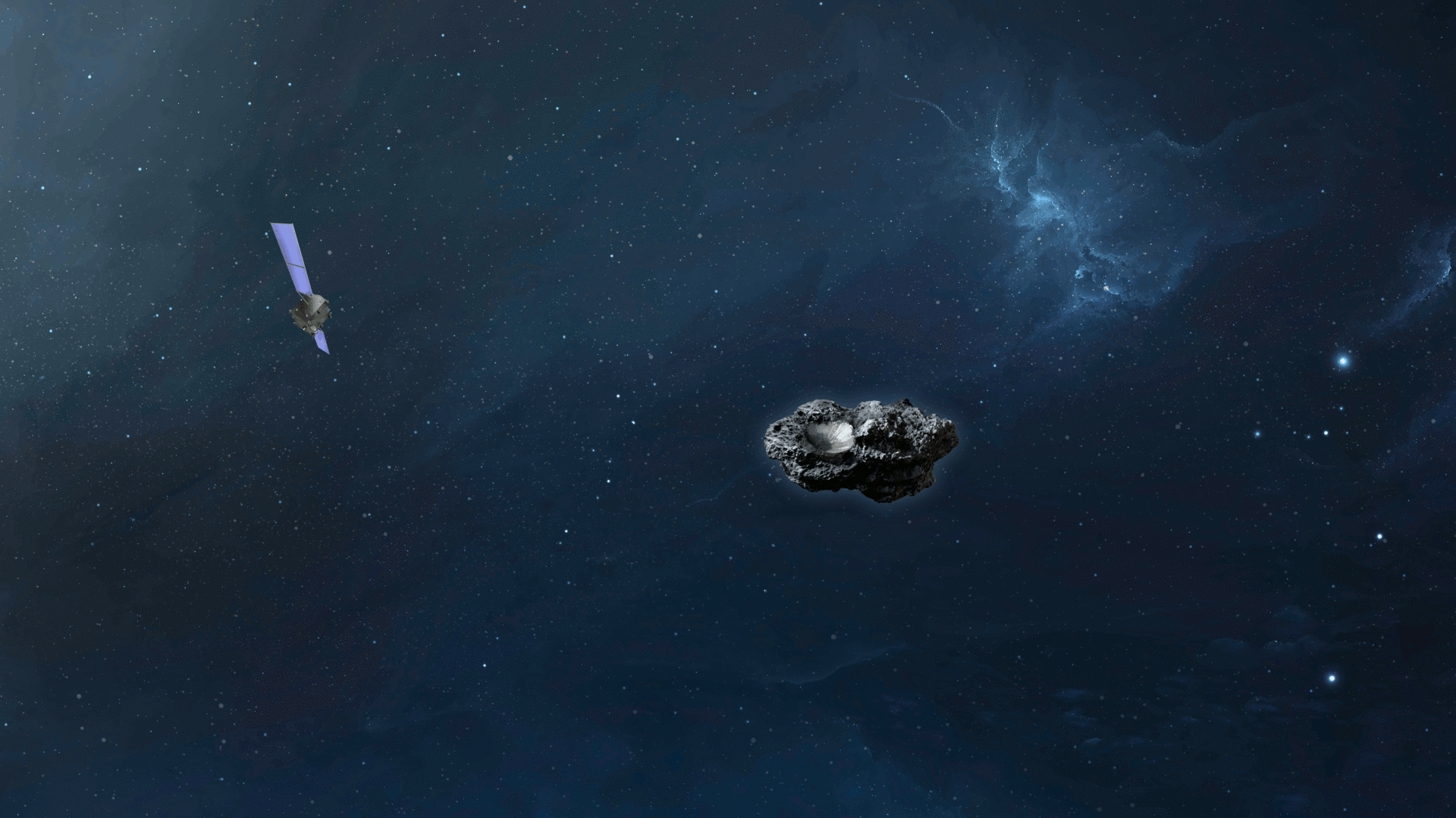
2020
Implementation of a new corporate strategy and more space for future projects at the headquarters in Bremen
Strategy "OHB 2025" and commissioning of the PLATO hall
At its Capital Market Day in February 2020, OHB presented its new corporate strategy "OHB 2025 – Shaping the Future", which includes the creation of a new business segment: OHB Digital. The new segment pools activities in the field of ground-based services. In addition to that, it also represents the starting point for the expansion of business with satellite-based data applications. As a result of this step, OHB can now offer satellites, launchers and space-based services – in other words, space from A to Z.
Following the inauguration of new clean room, storage and laboratory facilities in existing buildings at the Bremen site in June 2019, the OHB Group's largest clean room, the PLATO hall, was commissioned in April 2020 after a construction period of only 14 months. The first satellites to move into the hall are four flight models of the MTG satellites and the Heinrich Hertz communications satellite. This will free up space in other buildings which is urgently required for projects such as Hera and Copernicus.
OHB as prime contractor for the Copernicus mission CO2M
In July 2020, the execution of studies for the expansion of the European Earth observation programme Copernicus payed off: OHB was selected as the prime contractor for the CO2M mission and as subcontractor for the CHIME and CIMR missions. The CO2M satellites will allow to measure how much climate-damaging carbon dioxide is actually released into the atmosphere as a result of human activities. The measuring instruments carried by the satellites are so accurate that the emissions of individual countries and even individual regions and cities can be determined. In this way, the mission can help to meet the targets agreed in the Paris climate agreement.
Hera continues
After the green light for the Hera asteroid defence mission was given at the ESA Ministerial Council Conference in November 2019, the final approval for implementation was given on 15 September 2020: During a virtual workshop at the ESA Control Centre ESOC in Darmstadt, the contract was signed, officially making OHB the industrial prime contractor for the mission and representing an order intake of EUR 129 million. A particular challenge of the mission is the tight schedule: As NASA's DART probe is scheduled to launch in July 2021 and impact the Dimorphos asteroid in September 2022, Hera must launch in October 2024 in order to be able to carry out all the planned measurements in full and analyse the consequences of the DART impact in the best possible way.
2021
MT Aerospace: Ariane 6 follows Ariane 5
In 2021, the imminent generation change in Europe's launch vehicles was reflected in the signing of a contract: On 30 April 2021, OHB subsidiary MT Aerospace signed the supply contract for the series production of the new European launch vehicle Ariane 6, which will ensure independent European access to space after the Ariane 5 programme comes to an end. With a production share of around ten per cent, MT Aerospace is one of the largest suppliers.
2022
Successful satellite launches and setting off into the unknown
EnMAP and MTG-I1 set off to space
On 1 April 2022, OHB celebrated the successful launch of the German environmental satellite EnMAP (Environmental Mapping and Analysis Programme). EnMAP is the first and so far only hyperspectral satellite developed and built in Germany. The instruments installed on the satellite push the limits of what is technically feasible and were developed over many years at the OHB site in Oberpfaffenhofen. With its 242 imaging bands, EnMAP can record the sunlight reflected from the Earth's surface in high resolution from the visible to the short-wave infrared range and thus make a decisive contribution to understanding environmental changes in the course of climate change.
The next launch party followed on 13 December 2022, this time focusing on MTG-I1, the first satellite of the third generation of European weather satellites (Meteosat Third Generation). Everything went according to plan: The satellite smoothly separated from the rocket and reached its intended orbit without any issues. On 18 March 2023, the satellite delivered its first dataset: an image of the weather conditions over Africa and Europe with an unprecedented level of detail.
OHB Italia signs contract for ESA science mission Comet Interceptor
Two days later, on December 15, 2022, OHB became the prime contractor for another ESA science mission: OHB Italia signed the contract for the realisation of Comet Interceptor. The mission has several special features: On the one hand, it is the first mission to be implemented by ESA as a so-called fast-class mission. This means that it will take less than ten years from the selection of the mission to the launch. The second special feature is the mission itself: Comet Interceptor is to fly to a comet that is entering our solar system for the first time. This is to ensure that the probe examines material that has remained untouched since the formation of the solar system. It is not yet known which comet this will be and it is highly unlikely that it will be known at the time of launch.
2023
Launch of the third geostationary telecommunications satellite and conclusion of an investor agreement with KKR
Heinrich Hertz, the third geostationary telecommunications satellite built by OHB, was successfully launched into orbit on 6 July 2023. Like H36W-1 and EDRS-C, Heinrich Hertz is also based on the SmallGEO platform developed by OHB. The satellite was built by OHB for the German Space Agency at the German Aerospace Center (DLR) in Bonn on behalf of the German Federal Ministry of Economics and Climate Protection (BMWK) and with the participation of the German Federal Ministry of Defense (BMVg). It serves as a demonstrator for new telecommunications technologies and provides capacities for the German armed forces. The successful launch of Heinrich Hertz was also the last flight for the European Ariane 5 launcher and thus marks the end of an era.
KKR invests in OHB
On 7 August 2023 OHB SE signed an investor agreement with the investment company KKR and the majority shareholders on the terms and conditions of a strategic investment by KKR in OHB SE. This step will strengthen the capital base for the implementation of the growth strategy. While KKR will be a minority investor in OHB SE, the Fuchs family will remain the majority shareholder and retain permanent control of the company.

